Note: This is the fourth essay in an ongoing series.
Tragedies of the commons
In economics, the commons are territories in which resources are abundantly available and accessible. A tragedy of the commons occurs when resources are extracted to the point of collapsing the commons’ ecosystem.
This concept is often taught using the example of cattle grazing a field. In this instance, a few cattle ranchers begin extracting from the commons when its grasses are well rooted and naturally abundant. With immediate success, the ranchers are tempted to expand their flocks.
At an accelerating rate, the once abundant field becomes degraded while also losing its capacity to grow back — to regenerate. The grasses are both chewed up and pulled up from the ground.
Very quickly, a booming economy becomes a collapsing one. The commons have become barren, and the ranchers suddenly face desperate social circumstances.
At the root of this tragedy are cultures of extraction, exhibited by the ranchers’ instincts to exploit the resource unsustainably.1
Shareholder primacy
We will now examine the extractive nature of shareholder primacy, the corporate governance system that results from shareholders owning and controlling the company. Within this system, the shareholders appoint the board of directors to govern the firm. The board then appoints the chief executive to lead the firm.
Although many thinkers take offense to Milton Friedman’s doctrine that the purpose of business is to maximize its profits, this project interprets his words to be a statement of fact about this particular corporate structure.
Unless the business can demonstrate that its corporate purposes are otherwise (2), the shareholder primacy system only accommodates doing good in the interests of making money.3 With a persistent goal to maximize profits, the system recognizes no limits to growth.
Rather than inflicting tragedies onto themselves, profit-maximizing corporations tend to externalize harms onto other stakeholders and the natural environment. Economists call these effects negative externalities. In the context of shareholder primacy, some common negative externalities are:
On workers: when wages, conditions, and public policies are suppressive.
On consumers: when products are unsafe or unhealthy, or, when prices are inflated due to market consolidation.
In communities: when local resources are polluted or when business incentives come at the cost of local infrastructures and human services.
In democratic societies: when the political interests of privately-owned corporations supersede the political interests of everyday public citizens.
In other nations: when corporate activities extract from their workers, consumers, communities, or social wellbeing.
On the atmosphere: when corporate activities impact the climate and ozone layer.
In an ideal world, the growth of a business would benefit all of its stakeholders. However, shareholder primacy is a hierarchical system where making money for shareholders exceeds all other concerns. Thus, the extraordinary power of private corporations requires a counterbalance of strong societies and cultures with laws, regulations, taxes, and ethical customs that protect individual, societal, and ecological interests.4
Examples in the United States
Shareholder primacy is the dominant corporate system in the United States. As a representation of their financial power, the largest 500 publicly traded companies in the United States have a combined market valuation of around $40 trillion. By comparison, the total U.S. gross domestic product (GDP) in 2020 was about $21 trillion.
As a representation of their political power, U.S. laws entitle corporate interest groups to raise and spend unlimited sums of money as Super PACs (political action committees). Little stands between corporate interest groups and their abilities to influence politicians and the public discourse.5
These corporations also profoundly affect individuals’ lives as consumers, who experience thousands of corporate products, services, and ads every day.6 Altogether, corporate capitalism (and consumerism) are massive elements of modern American culture.
At what costs?
While readers may be familiar with many of the following examples, they bring together a broad scope of negative externalities facing the United States and global societies.
Many leading causes of death in the United States, such as heart disease (#1), accidents (#3), chronic lower respiratory diseases (#4), strokes (#5), and diabetes (#7), are highly correlated to causes within the food, beverage, tobacco, automotive, and mass media industries.
The medical industry is financially incentivized to treat chronic diseases with expensive, synthetic, patentable, and daily medicines, often with adverse side effects. This economic system coincides with a legal system that criminalizes safe, low-cost, and naturally growing medicines such as cannabis and psilocybin mushrooms.
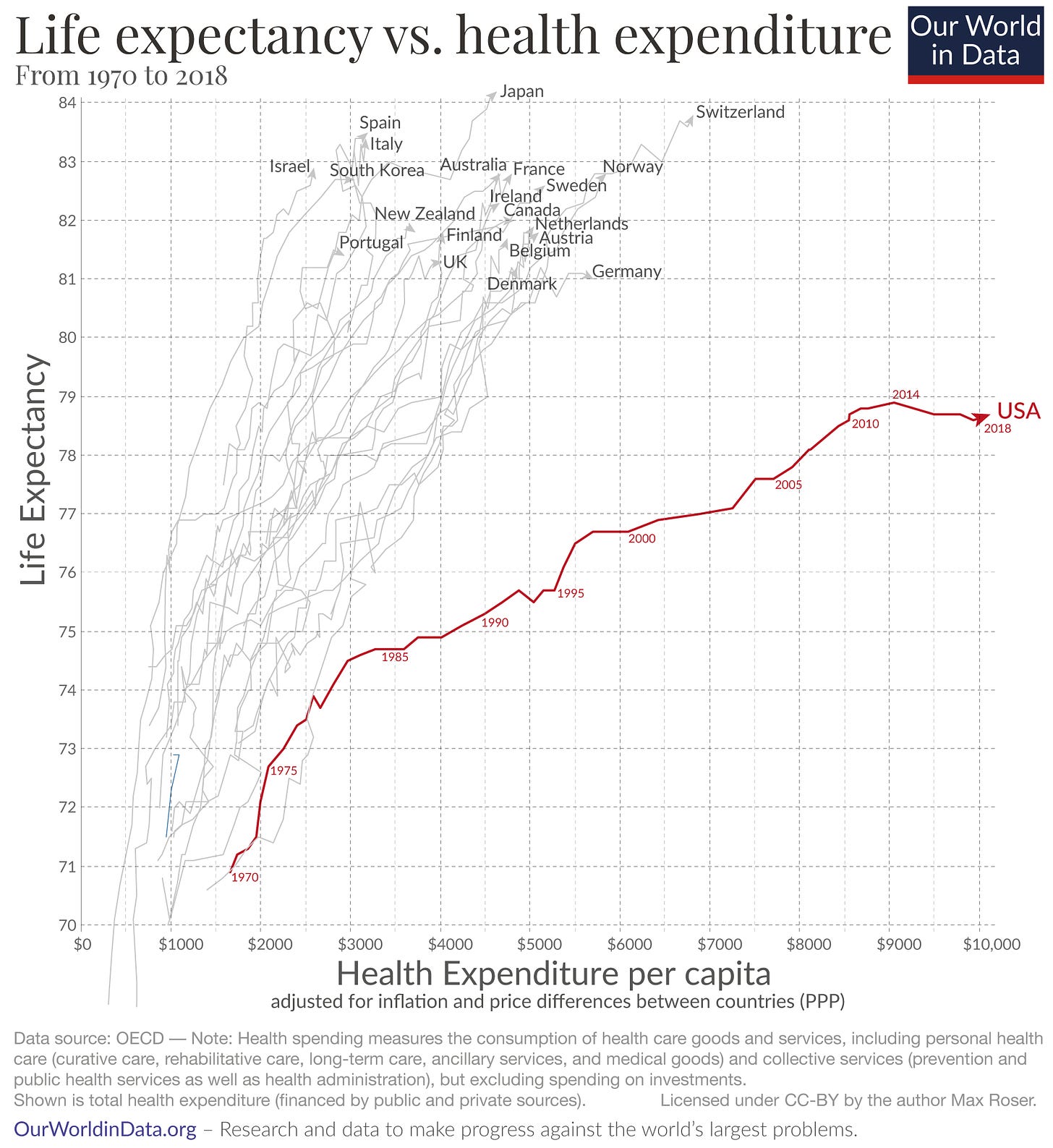
The gaming and gambling industries are incentivized to addict their consumers, resulting in negative personal finance, behavioral, and social outcomes.

The fossil fuel industries are incentivized to emit climate-changing greenhouse gasses.
The plastics industries are incentivized to leave a footprint of massive environmental waste. Research is also emerging about plastic exposure correlating with severe physical, mental, and fertility disorders.

The suppression of minimum wages to levels below the poverty line obligates social institutions to supplement the basic needs of these individuals and families. It also fosters chronic financial stress within households and inhibits social mobility.
The suppression of paid family leave benefits deters people from having children and nurturing newborn children. These benefits are significant factors in child development and gender equity in the workforce.
Lowering corporate tax rates typically fails to meet their proponents’ economic stimulation targets, leading to rising deficits and inequality in the United States. As the nation’s debt-to-GDP ratio rises, debt payments hinder the federal budget and factor into the risk of financial crises.
Through the corporate bailouts of 2008 and 2020, large corporations have repeatedly violated foundational principles of free-market capitalism, threatening the resiliance and legitimacy of the U.S. economic system.
Corporate externalities now reach global proportions.
The headlining environmental issue on today’s global stage is climate change from carbon emissions, a problem that only began accelerating in the 1950s and 60s — simply the lifespan of the Baby Boomer generation.
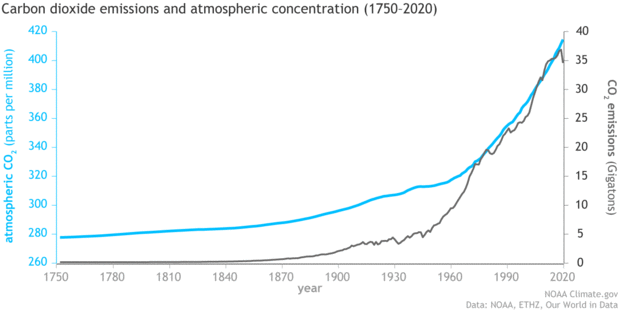
Today, a lifetime of booming has reached tipping points of collapsing climate systems. It remains to be seen whether international leaders will take effective action to prevent the most catastrophic outcomes.7
The chart below demonstrates that the United States emits the most carbon dioxide per person among large economies. Besides Russia, carbon emissions per person in the U.S. are more than two times other countries.
In an amalgamation of environmental data, the researchers at Earth Overshoot Day calculate the day of the year that a society’s consumption exceeds the planet’s natural regenerative capacity. Globally, the consumption rate is 1.7 times regenerative levels. At the consumption rate of the United States, it’s five times. More details and figures about these issues are in the footnotes.8
Emerging technologies
The dominant social media company, Facebook, has a stated mission to “give people the power to build community and bring the world closer together.” With 2.89 billion monthly active users, the company certainly has that capability.
Yet Facebook’s algorithms are also programmed by leading psychologists, neuroscientists, computer scientists, and artificial intelligence to hack the human mind. The company makes no secret of this. Currently, Facebook is hiring for Ph.D.-level researchers “…to investigate the nature of human neuromotor signals (i.e., electromyography or EMG), develop novel signal processing and machine learning methods to infer a user’s intent, and create novel interaction techniques and user experiences.”
Towards the firm’s overarching incentive to maximize shareholder profits, Facebook’s algorithms have had the effects of driving social media addiction, teen depression, misinformation, political polarization, and deadly anti-government protests.9 Paradoxically, the founder’s techno-utopian vision to bring the world closer together has also had the dystopian effects of tearing the social fabrics of the world apart.

Looking ahead, Yuval Noah Harari, a famous historian, is bringing awareness to the unprecedented ethical and social issues posed by the rise of artificial intelligence, gene editing (CRISPR), and surveillance technologies. For investors, the development of these new technologies represents multi-million, billion, or perhaps trillion-dollar growth opportunities. Thus, it is incumbent on social and political leaders to get ahead of these issues.
In the United States, Andrew Yang’s Forward Party is platforming proposals for a Department of Technology in the Executive Branch and for Congress to re-establish the Office of Technology Assessment, which was disbanded in 1995. According to their proposal, the Office of Technological Assessment would inform legislators about new technologies and the impacts of possible regulations on them. The Department of Technology would enforce the regulations that Congress passes.
Conclusions
This essay introduced the tragedy of the commons and established a baseline argument about the extractive nature of shareholder primacy as a corporate governance system. It then exhibited the overwhelming financial, economic, cultural, technological, and political powers that corporate interests have accumulated in modern society.
The issues raised by this essay are alarming for the stability of the United States and the global climate. It’s reminding of Jared Diamond’s study in Collapse: How Societies Choose to Fail or Succeed (2005). Among many cases, he distills the collapse of the Greenland Norse society to “a conflict between the short-term interests of those in power, and the long-term interests of the society as a whole.”10

The next essay shifts into cultures of regeneration, which operate on renewable rather than extractive principles.
Cultures of Regeneration
Is it possible to harmonize economic and social progress with environmental recovery?
If this is compelling work, please support the project by subscribing, sharing, and following your passions to change the world for the better.
Published November 17th, 2021 (1.0)
Updated August 5, 2023 (1.22)
References for this section:
Hardin, G., 1968. The tragedy of the commons. Science, 162, 1243–1248. doi: 10.1126/science.162.3859.1243
Dahlin, Johanna, and Martin Fredriksson. “Extracting the Commons.” Cultural Studies (London, England), vol. 31, no. 2-3, Routledge, 2017, pp. 253–76, https://doi.org/10.1080/09502386.2017.1303428.
Junka-Aikio, Laura, and Catalina Cortes-Severino. “Cultural Studies of Extraction.” Cultural Studies (London, England), vol. 31, no. 2-3, Routledge, 2017, pp. 175–84, https://doi.org/10.1080/09502386.2017.1303397.
Examples of alternative governance mechanisms include being a non-profit, benefit corporation, or a purpose trust. Examples of certification processes include B-Corp and the Long Term Stock Exchange.
Put another way; this project argues that concepts like corporate purpose, stakeholder capitalism, and conscious capitalism are often exhibited as rhetoric that’s gotten ahead of the structural realities of the firm. The previous essay about corporate purpose and crony capitalism elaborates on this point.
While this essay is set in the predominant paradigms of the American economy, the following essay begins to interrogate emerging perspectives through the regenerative paradigm.
Judd Legum at Popular Information does extensive reporting about the corporate activities undermining democracy.
Market research firms estimate that typical Americans are exposed to thousands of ads every day. While there’s a lack of scientific literature to prove this point, the argument holds so long as the quantities are significant. Skeptics can put thought to the number of brand images that they’re exposed to while shopping in a supermarket, driving (storefronts and billboards), watching TV (commercials), and scrolling social media (ads).
There is a precedence for successful global cooperation on environmental issues. In the case of ozone layer depletion in the 1970s and 80s, global powers acted in time on the evidence of scientific data to regulate its industrial causes (CFC and HPMP emissions).
More facts and figures on environmental issues:
[a] The chart below from the U.S Environmental Protection Agency allocates the distribution of greenhouse gas emitters across the U.S. economy.
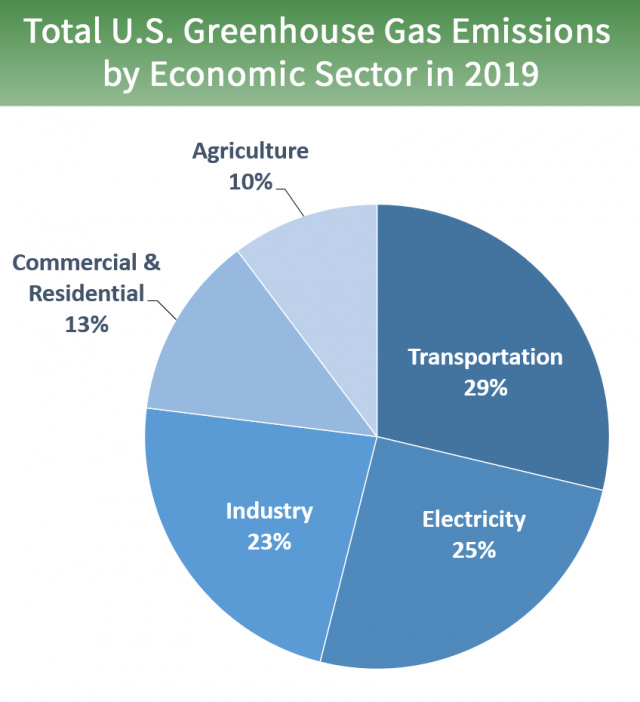
[b] Project Drawdown, led by Paul Hawken, is a leading effort to address climate change on the global stage. It lists, categorizes, and ranks 100 potential solutions.

[c] A 2009 study synthesized and visualized nine planetary environmental boundaries, shown in the image below. It illustrates the safe operating space for human activity through the green circle. The red wedges demonstrate human activity concerning those limits.
The three most alarming variables from this study were:
The rate of biodiversity loss.
Human interference with the nitrogen cycle.
Climate change.

[a] The Social Dilemma, a documentary film via the Center for Humane Technology, and Francis Haugen, a Facebook whistleblower, have brought these issues into the public sphere. These effects are also complex and nuanced, as this Stanford study indicates.
[b] This segment from The Social Dilemma presents correlating data between social media and the emergence of depression, self-harm, and suicide among teenage girls.
[c] At the time of publication, Facebook is in the process of renaming itself to “Meta.”
Quoted from Collapse: How Societies Choose to Fail or Succeed, by Jared Diamond, page 276.




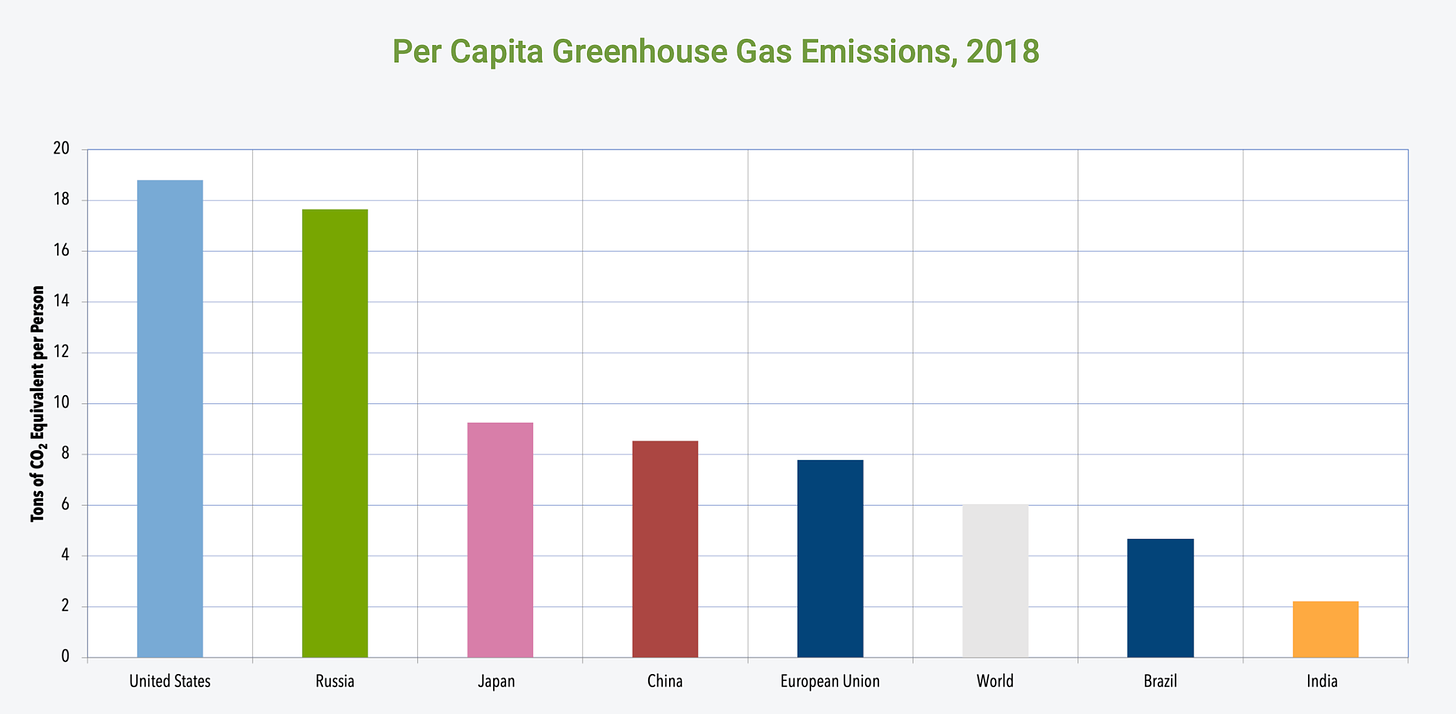
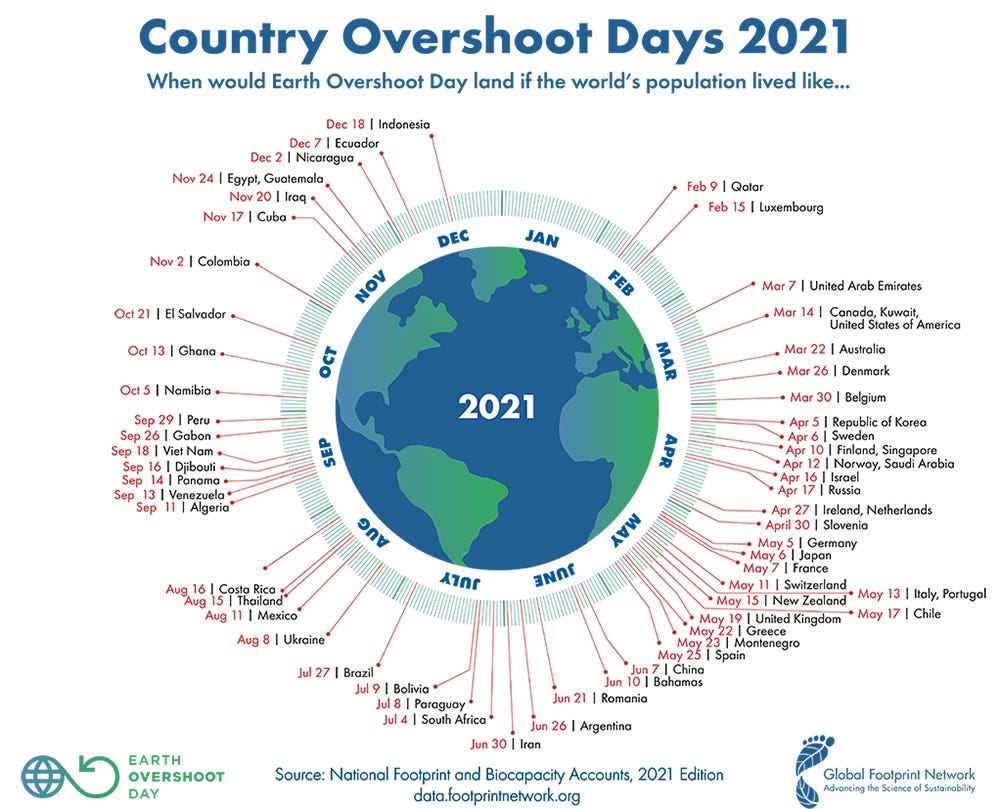

Great article Mike. Nice #yanggang reference. After losing in national and local politics do you think he’s just 10 years too early?